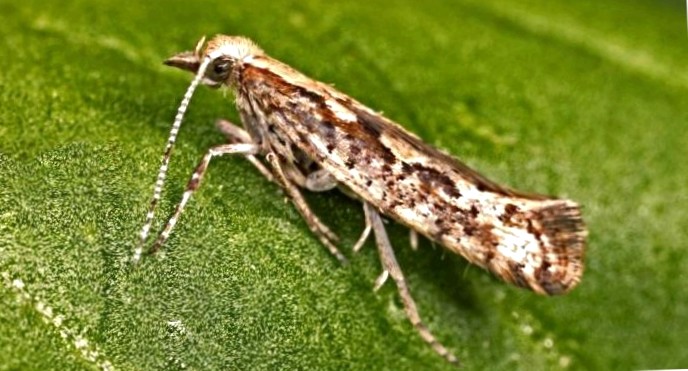
Kohlschabe (plutella xylostella). Image: david mcclenaghan, csiro, cc-by-3.0
Plan to release transgenic cabbage dams ignore indications for your predictable failure
The cabbage is originally from the mediterranean and is now widespread worldwide. In the us, the invasive moth was first noticed in 1854. His life cycle is quite short at normal ambient temperatures with about two weeks. He can handle rough stretch with wind underlature and is very fruitful — in one year can consequence of 30 generations together, and, according to experts, with progressive climate change probably even more.
Cabbage caterpillars are economically important damages in agriculture. They feed on cultured cross bloomers — including cabbage and broccoli whose blatter they eat. The combating of the cabbage is considered difficult. Scattered quantities of evidence and harvest damage worldwide: four to five billion us dollars.
It is extremely steady and has trained resistance to each other resistance to opposite insecticides, such as against methomyl and permethrin. The kohlschabe is the first agriculturally important shadling, which was able to develop a resistance to opposite ddt — and the first way in which resistance was observed against biodegradation by bacillus thuringensis (bt) -toxine. Alternative control methods such as the use of parasites for population control have in places of success, but are present, however, of subordinate importance.
Scientists of cornell university try with another approach. You want to be at the new york state agricultural experiment station (nysaes) now on a four-hectare cabbage field up to 30.000 genetically modified (gm), release a variety of falters per week, which should solve the problem. The plan: oxitec-gm insect teams couple with wildlife and compete with the reproductive wildlife. The desired population is introduced because the daughter arising in a successful mating will not survive the larvae stage.
The experiments should run over a period of two years. The gm cabbage dams come from the assortment of transgenic insects of the british company oxitec. Oxitec stands for oxford insect technologies and is a biotech spin-off of oxford university. The company was 2015 for 160 million us dollars of intrexon, inc. Bought, a biotechnology company based in germantown, us state of maryland. Intrexons used as a trademark motto: "the creation of a better world committed by better dna".